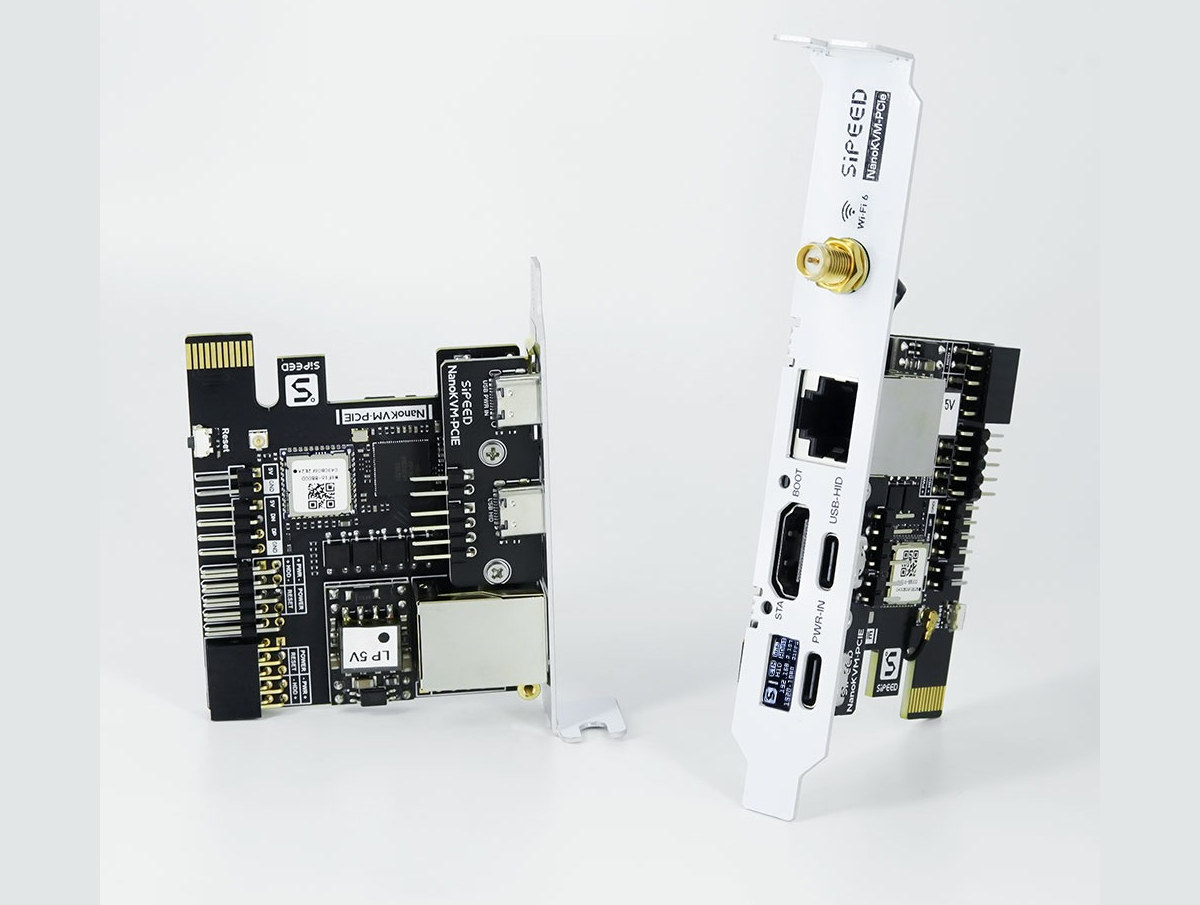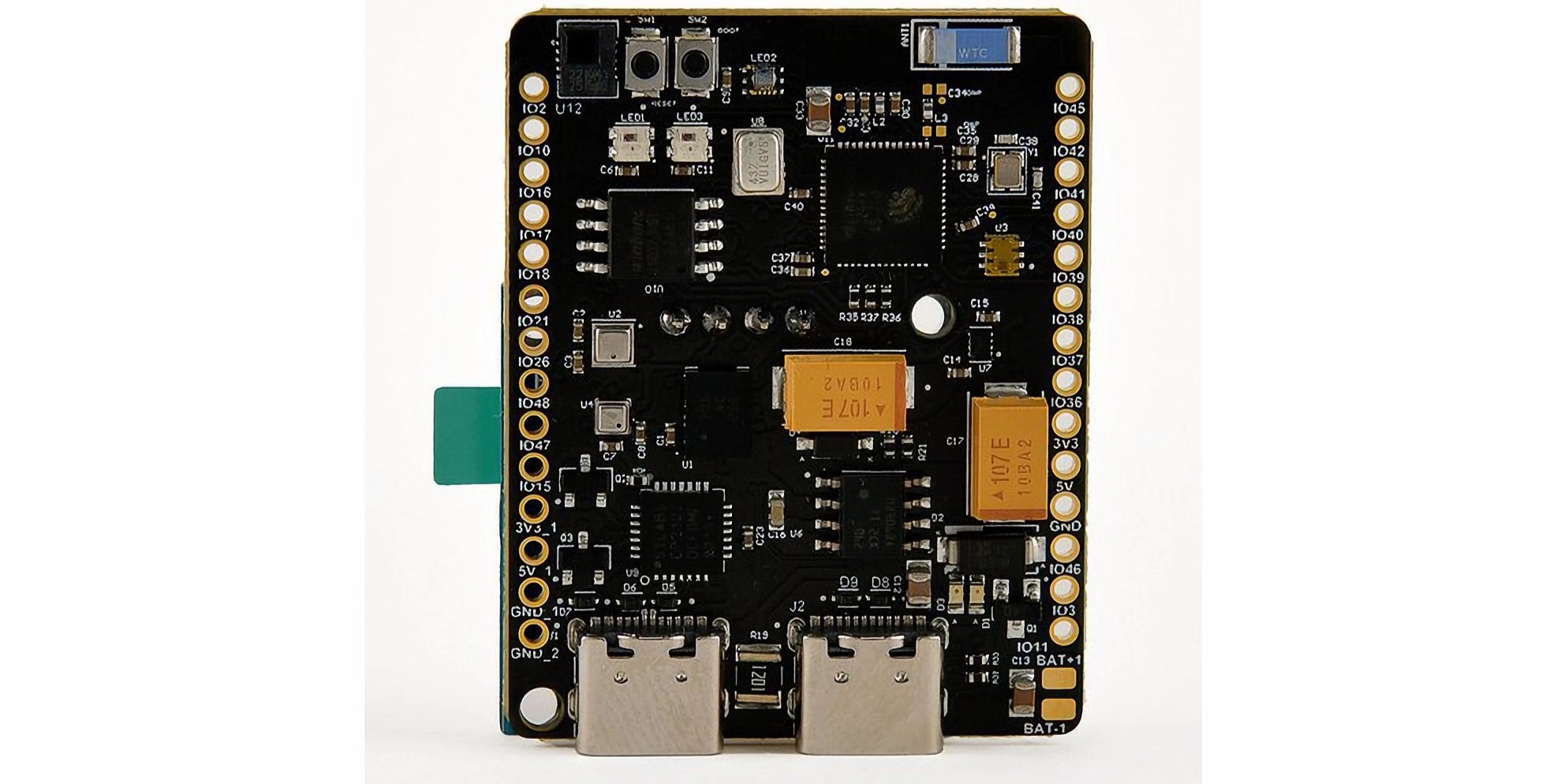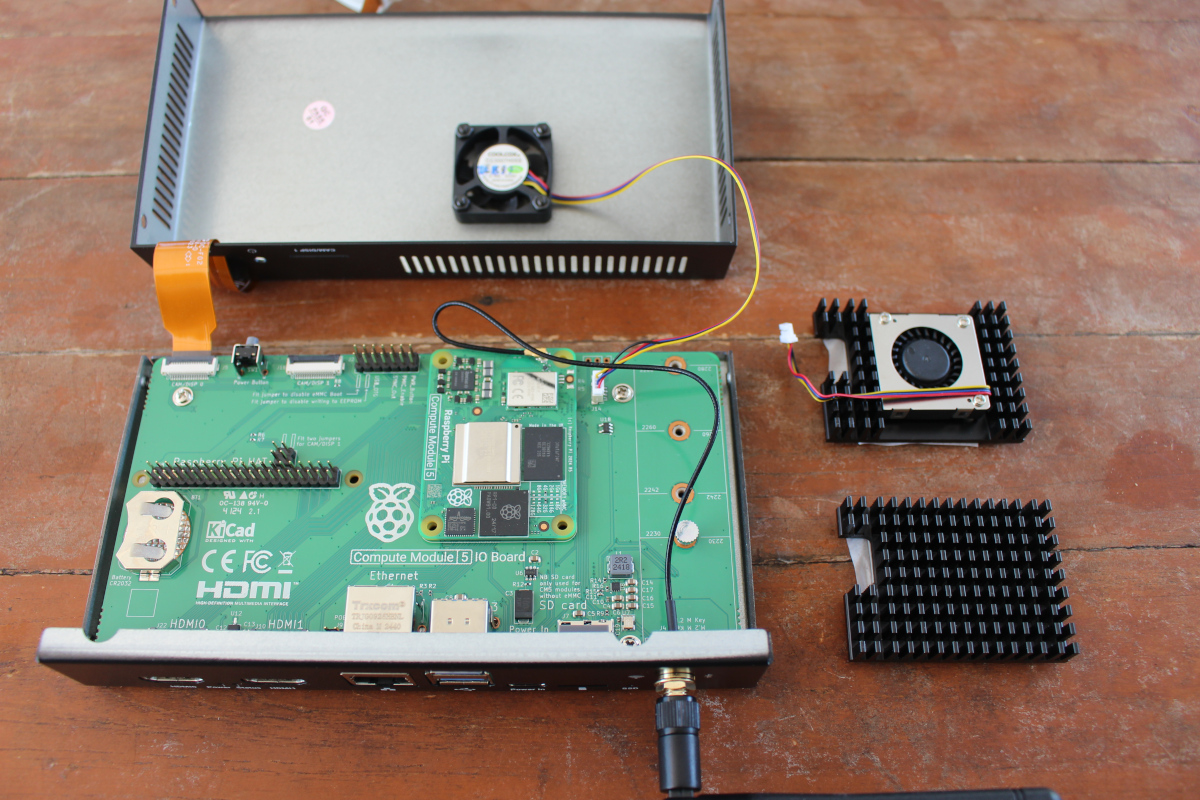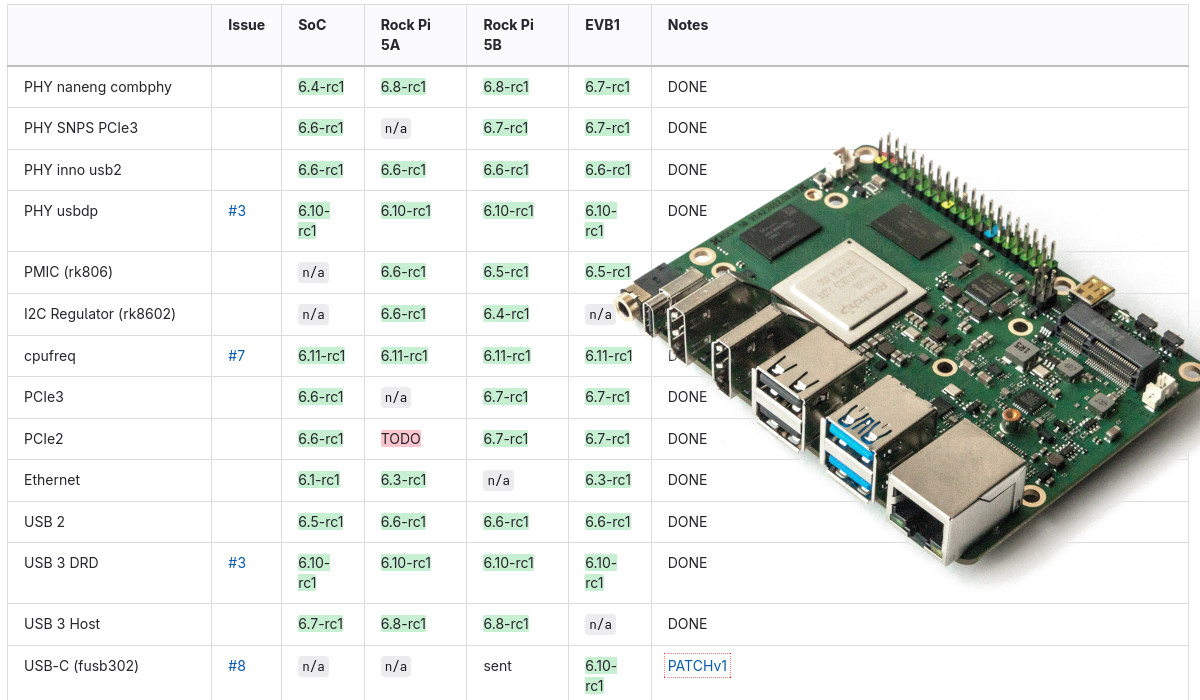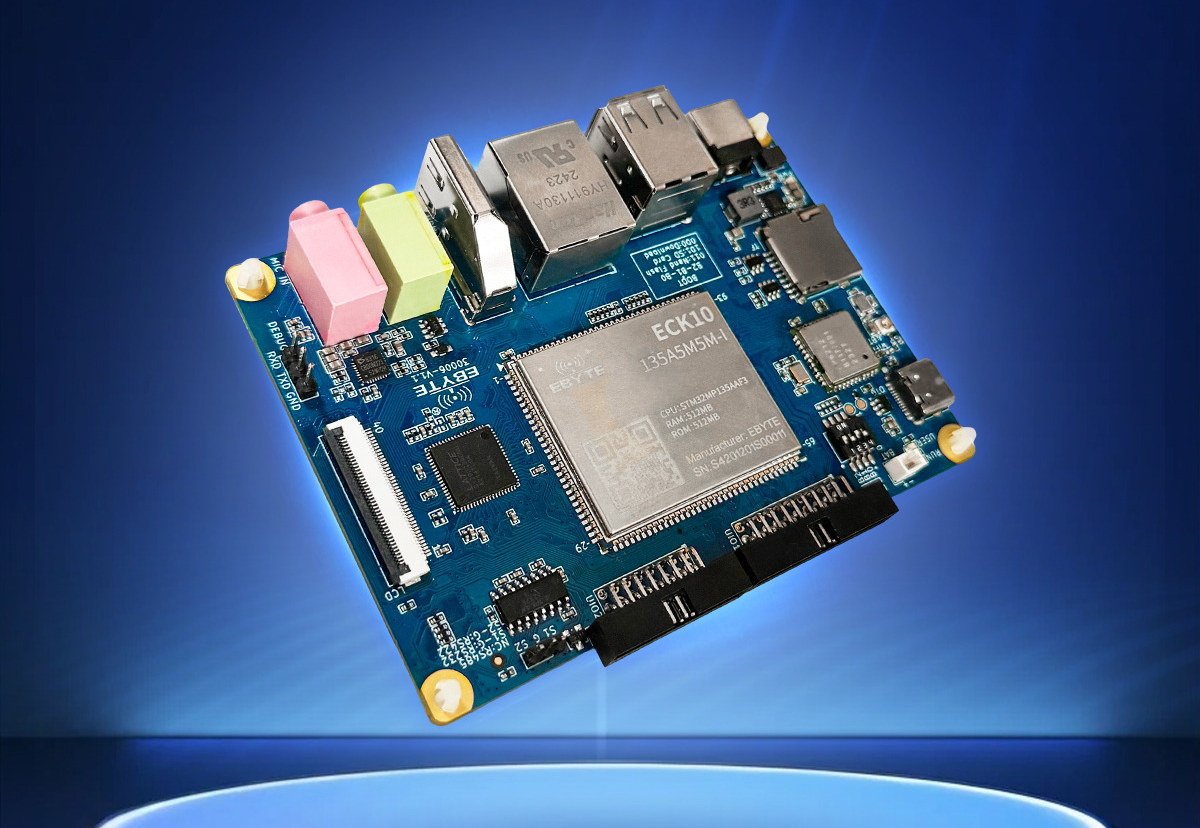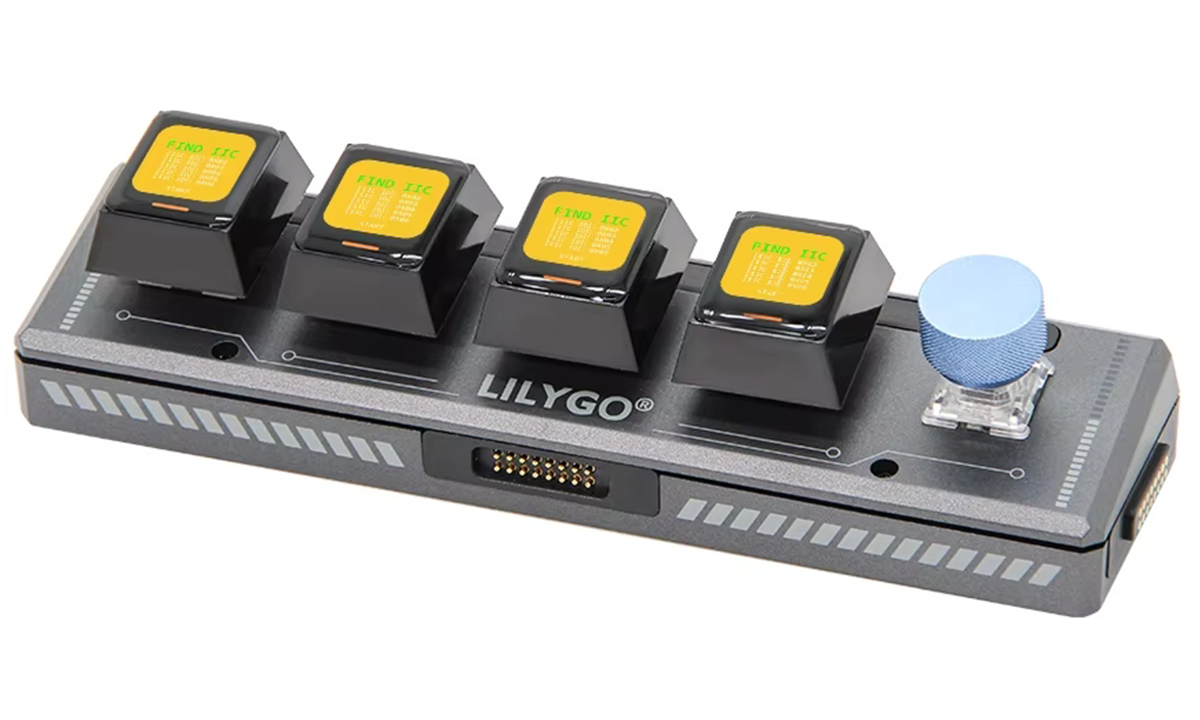Sipeed NanoKVM-PCIe is a variation of the NanoKVM KVM-over-IP solution introduced last summer, but instead of being a tiny Cube with USB-C power, the new model can be powered through the PCIe slot from the host (as well as USB-C) and adds optional WiFi 6 and PoE functionality. While it’s not based on the LicheePi Nano SBC like the NanoKVM, it relies on the same SOPHGO SG2002 RISC-V/Arm/8051 SoC and offers many of the same ports in a different form factor including 10/100Mbps Ethernet, two USB-C ports one for HID, the other for power, a small OLED information display, and an HDMI input port supporting up to 1080p60. NanoKVM-PCIe specifications: SoC – SOPHGO SG2002 Main core – 1GHz 64-bit RISC-V C906 or Arm Cortex-A53 core (the latter is likely not used here) Minor core – 700MHz 64-bit RISC-V C906 core Low-power core – 25 to 300MHz 8051 MCU core VPU […]
STMicro ST67W611M1 IoT module features Qualcomm QCC743 SoC with Wi-Fi 6, BLE, and 802.15.4 radios
ST Microelectronics has introduced the ST67W611M1 IoT module developed in partnership with Qualcomm and integrating the latter’s QCC743 multi-protocol connectivity chip with Wi-Fi 6, Bluetooth 5.3 Low Energy (BLE), Thread-compatible IEEE 802.15.4 connectivity, and support for Matter-over-Wi-Fi. Additionally, it features 4MB of flash storage and provides options for a PCB or external antenna via a uFL connector. The module is designed to connect with STMicro’s STM32 microcontroller and microprocessor families through SPI and/or UART, making it easy to add wireless connectivity to STM32-based projects, including those using the new STM32N6 chips with an in-house Neural-ART machine learning accelerator. These features make this chip suitable for smart home devices, industrial IoT systems, wearables, healthcare monitors, and connected appliances. ST67W611M1 specifications: Wireless Connectivity Wi-Fi 6 with up to 20 dBm output power Bluetooth Low Energy 5.3 with 2 Mbps throughput Thread support Supports Matter protocol over Wi-Fi for future-proof connectivity Storage – […]
Sensy32 Board is an ESP32-S3 sensor platform with up to six sensors for environmental monitoring in IoT applications
The Sensy32 Board is a compact sensor platform powered by Espressif’s flagship ESP32-S3 WiFi and Bluetooth microcontroller. The development board brings different monitoring devices together on the same PCB for easier integration into IoT ecosystems. It is a multipurpose device with several sensors bundled to measure and monitor ultraviolet light intensity, altitude, pressure, orientation, humidity, temperature, motion, and human presence. It includes a 9-degree-of-freedom inertial measurement unit (IMU) for 3D space orientation, while the built-in MEMS microphone can be used for audio input in voice detection and noise measurement applications. The onboard ESP32-S3 microcontroller powers the array of features and also offers Wi-Fi and Bluetooth Low Energy connectivity. The Sensy32 ESP32-S3 sensor platform also integrates an LCD screen for immediate feedback and real-time monitoring. We have covered other ESP32-based environment sensors such as the Qsen-07 multi-sensor board, AirGradient ONE, MoreSense MS-06, and Studio LUFF’s Air Quality Sensor. Sensy32 specifications: MCU […]
Raspberry Pi CM5 review with different cooling solutions (and camera tribulations)
The day of Raspberry Pi CM5 release, I published a mini review of the Raspberry Pi Development Kit for CM5 showing how to assemble the kit and boot Raspberry Pi OS, and I also ran sbc-bench benchmark to evaluate the performance. Sadly, the Broadcom BCM2712 CPU did throttle during the test meaning cooling was not optimal when the CM5 IO board was inside the IO Case and the Compute Module 5 was only cooled by the fan. So today, I’ll repeat the same test with other cooling solutions namely the official Raspberry Pi Cooler for CM5 (that’s a heatsink only), and EDATEC’s CM5 active cooler similar to the active cooler for the Raspberry Pi 5, but designed for the CPU module. But before that, I’ll do some house cleaning so to speak since last time, I booted Raspberry Pi OS from an NVMe SSD and I noticed the camera did […]
Rockchip RK3588 mainline Linux support – Current status and future work for 2025
The Rockchip RK3588 is one of the most popular Arm SoCs for single board computers, and while good progress has been made with regards to mainline u-boot and Linux support, the SoC is quite complex and it takes time to port all its features even though it was first teased in 2020 and the first Rockchip RK3588 SBCs were introduced in 2022. While the simpler Rockchip RK3566 and RK3568 SoCs are already fairly well supported in mainline Linux, more work is needed to upstream code, and as noted before in posts and comments here, Collabora keeps track of the status on Gitlab, and the company recently posted an article about the progress and future plans related to upstream Linux support for Rockchip RK3588. Rockchip RK3588 mainline Linux progress in 2024 Linux 6.7 kernel – Network support on the Radxa ROCK 5B using a 2.5GbE PCIe controller. Linux 6.8 kernel – […]
STM32MP135 Pico-ITX SBC features 38x32mm EBYTE CPU module with 512MB RAM, 512MB NAND flash
EBYTE ECB10-135A5M5M-I is a pico-ITX single board computer (SBC) equipped with a small STM32MP135 Arm Cortex-A7 CPU module from the company equipped with 512MB DDR3L, 512MB NAND flash, a Gigabit Ethernet PHY, and power circuitry. The industrial-grade SBC itself features RGB and HDMI 2.0 connectors supporting up to 1366×768 resolution, 3.5mm Line in and out jacks, several USB connectors, and two “UIO” expansion ports with RS485, RS485, CAN Bus, GPIO, and other I/Os. These features make the board suitable for industrial automation, smart cities, display and control terminals, and other industrial applications. EBYTE ECB10-135A5M5M-I specifications: EBYTE ECK10-135A5M5M-I core board SoC – STMicro STM32MP135AAF3 single-core Arm Cortex-A7 core clocked at 650MHz System Memory – 512MB DDR3L Storage – 512MB SLC NAND flash Networking – Gigabit Ethernet PHY Host interface – 128-pin stamp holes Power Management 3.3V/1A power input PMIC – STPMIC1APQR 2x 1.7-3.0V LDO with 350mA max current Dimensions – 38 […]
T-Keyboard-S3 Pro 4-Key USB mechanical keyboard adds rotary encoder, support for daisy-chaining up to six keyboards
Last year, we featured the T-Keyboard-S3, a USB mechanical keyboard with ESP32-S3, and four mechanical keys each fitted with a 0.85-inch color display. The upgraded T-Keyboard-S3-Pro adds a rotary encoder and four magnetic interfaces on each side controlked by an STM32G030 MCU to daisy-chain the host keyboard with up to 5 slave keyboards in a 3×2 grid. Previously, we featured the ANAVI Macro Pad 12, Macro Pad 10, and Macro Pad 2 programmable keyboards. Feel free to explore those as well. LILYGO T-Keyboard-S3 Pro specifications: Wireless module – ESP32-S3-WROOM-1 used in the host model only MCU – ESP32-S3R8 dual-core LX7 microprocessor @ up to 240 MHz with Vector extension for machine learning Memory – 8MB PSRAM Storage – 16MB SPI flash Connectivity – WiFi 4 and Bluetooth 5 with LE/Mesh PCB antenna Secondary MCU – STMicro STM32G030F6P6 for I2C magnetic connectors CPU – Arm 32-bit Cortex-M0+ CPU, frequency up to […]
WeAct RP2350A_V20 is a cheap Raspberry Pi RP2350 board with up to 16MB flash
WeAct RP2350A_V20 may be the world’s cheapest Raspberry Pi RP2350 board around with a design similar to the official Raspberry Pi Pico 2, but featuring a black PCB, a Reset button, a USB-C port and offered with either 4MB or 16MB flash. WeAct is selling its RP2350 board for $3.47 (4MB) and $4.46 (16MB) respectively before shipping and potential taxes are taken into account. WeAct RP2350A_V20 specifications: SoC – Raspberry Pi RP2350A CPU Dual-core Arm Cortex-M33 @ 150 MHz with Arm Trustzone, Secure boot OR Dual-core RISC-V Hazard3 @ 150 MHz Up to two cores can be used in any combination Memory – 520 KB on-chip SRAM Package – QFN-60 Storage – 4 MB or 16MB on-board QSPI flash USB – USB Type-C 1.1 host/device connector for power and programming Expansion – 2x 20-pin headers 26x GPIO 2x UART 2x SPI controllers 2x I2C controllers 16x PWM channels 3x ADC […]


